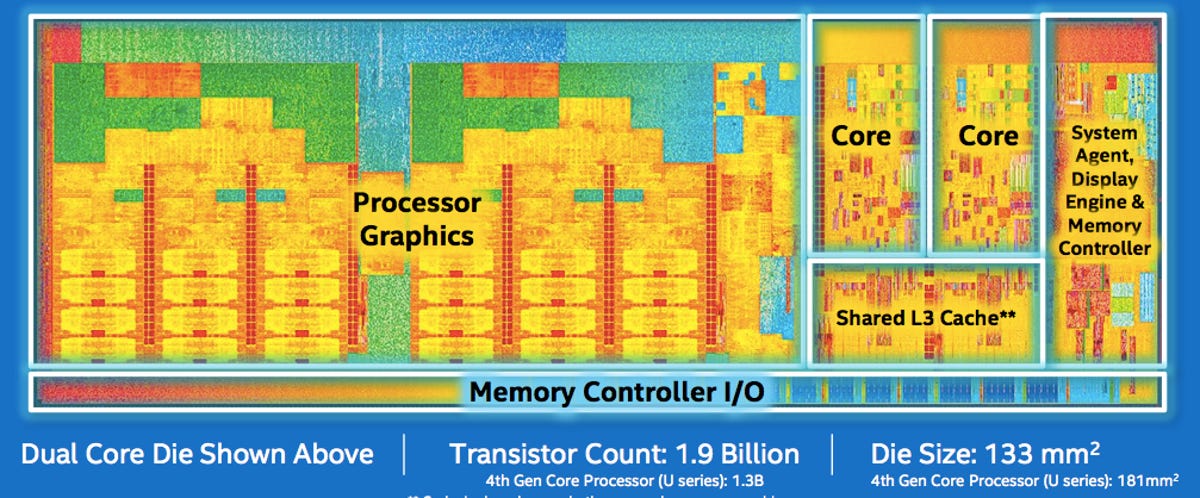
Intel
Intel hopes it can breathe new life into the sagging personal-computer market with its newest line of processors.
The Santa Clara, Calif.-based chips giant on Monday officially launched its fifth generation of Core processors for PCs and top-end laptops, offering higher performance, longer battery life and improved graphics capabilities from its fourth-generation chips.
The fifth-generation chips will round out Intel’s portfolio of new processors, joining the more on-the-go Core M line of chips, which launched in August for use in tablets, smaller laptops and 2-in-1 tablet-laptop hybrids.
The company also said Monday that its new and more powerful Cherry Trail processor for tablets is now shipping to customers and will be in new products in the first half of the year.
See also: CNET’s full coverage of CES 2015
Intel’s announcement comes at the start of the 2015 Consumer Electronics Show in Las Vegas, where Intel and many other tech firms will be announcing new products. Expect new devices using the 14 new fifth-generation Core processors to be announced this week at CES, with even more powerful processors coming by midyear.
There’s a lot at stake for Intel with these new Core chips. The company’s processors power most of the world’s desktops and laptops, but sales of those devices have been in decline for years as more consumers use smartphones and tablets for their computing needs. Worldwide PC shipments were down 1.7 percent in the third quarter of 2014 from a year ago, according to researcher IDC. Intel’s new line of chips could convince more people to upgrade their PCs or consider buying a high-performance laptop or desktop for some of the heavy-lifting computing jobs mobile devices still can’t do as well — such as graphics processing for video games or video editing.
On top of that, Intel will be bundling the beefed-up chips with its new RealSense technology, which allows users to scan 3D objects, as well as the ability to wirelessly dock a PC. “They’re going to get a much better reception by putting these other interesting features into the platform,” said Patrick Moorhead, president of Moor Insights and Strategy, which could help bring in more PC customers.
RELATED STORIES
- Intel: With Core M, there’s finally a reason to upgrade your laptop
- Intel unwraps Core M chip that lets PCs run sans fans
- Intel delays Broadwell PC chip production to early next year
While Intel uses the new Core processors to make desktops more enticing, it’s rolling out Core M to encourage customers to update their laptops. Core M — which is now in portable devices from Acer, Dell, Lenovo and others — allows device makers to build computers that are thinner, lighter, more power efficient and don’t need a fan.
The new Core family, Core M and Cherry Trail use a 14-nanometer architecture, nicknamed Broadwell, which Intel has been working on for years and has struggled to deliver to the market due to problems manufacturing the advanced technology.
Still, Intel remains ahead of the pack in the race to release ever more advanced processors by shrinking the geometries of chips. Moving to 14 nanometers, or billionths of a meter, from Intel’s prior 22-nanometer chip, dubbed Haswell, allows PC makers to build more powerful and thinner devices, thanks to Intel providing more transistors packed into smaller chips.




